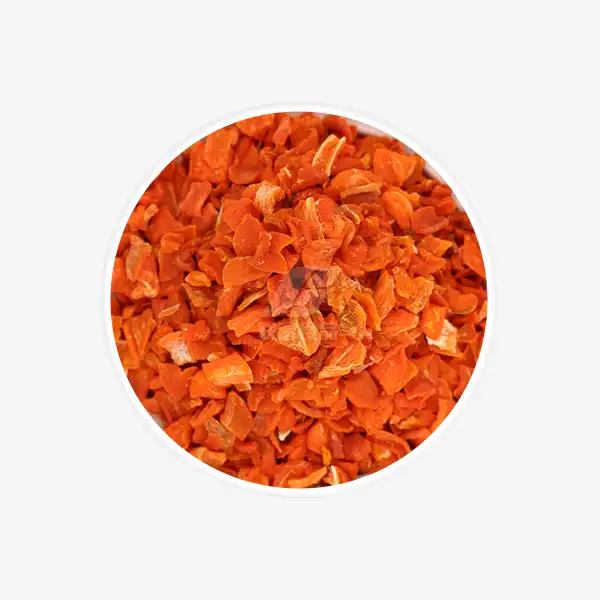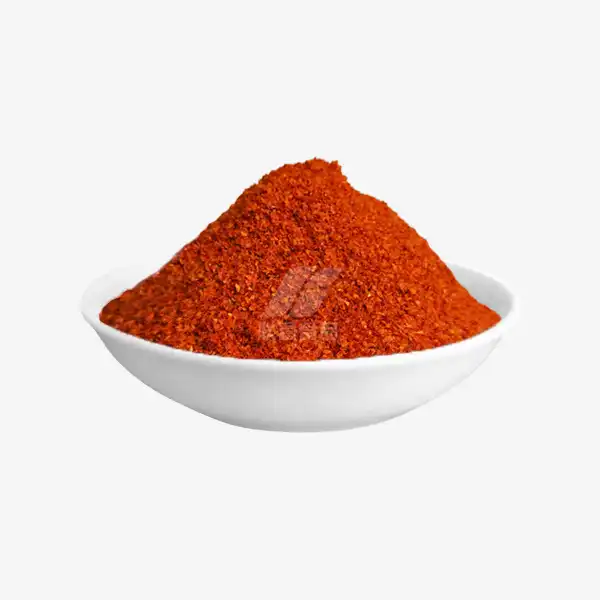Can minced garlic be dehydrated?
Garlic is a culinary staple that adds incredible flavor to countless dishes. But fresh garlic can be inconvenient to store and prepare. That's where dehydrated minced garlic and dehydrated garlic minced come in handy. If you've ever wondered "Can minced garlic be dehydrated?", the answer is a resounding yes! Dehydrating minced garlic is an excellent way to preserve this aromatic ingredient for long-term storage while maintaining its potent flavor.
In this comprehensive guide, we'll explore the process of dehydrating minced garlic at home, the many benefits of using dehydrated garlic, and proper storage techniques. Whether you're a home cook looking to extend the shelf life of your garlic or a food prepper wanting a shelf-stable option, dehydrated minced garlic is an invaluable pantry staple.
How to Dehydrate Minced Garlic at Home?
Dehydrating minced garlic at home is a straightforward process that allows you to create your own preservative-free dried garlic. Here's a step-by-step guide to dehydrating minced garlic:
Ingredients and Equipment Needed:
- Fresh garlic cloves
- Food processor or garlic press
- Dehydrator or oven
- Parchment paper or dehydrator sheets
- Airtight storage containers
Step 1: Prepare the Garlic
Start by peeling the garlic cloves. You can do this manually or use a garlic peeler tool for quicker results. Once peeled, rinse the cloves under cool water to remove any dirt or debris.
Step 2: Mince the Garlic
Use a food processor or garlic press to mince the garlic cloves. If using a food processor, pulse in short bursts to achieve a fine, even mince without turning the garlic into a paste.
Step 3: Spread the Minced Garlic
If using a dehydrator, spread the minced garlic and dehydrated garlic minced evenly on dehydrator trays lined with parchment paper or non-stick dehydrator sheets. For oven dehydration, spread the garlic on baking sheets lined with parchment paper.
Step 4: Dehydrate
- For dehydrator method: Set the temperature to 115°F (46°C) and dehydrate for 6-8 hours, or until the garlic pieces are completely dry and brittle.
- For oven method: Set your oven to the lowest temperature (usually around 170°F or 76°C). Prop the oven door open slightly to allow moisture to escape. Dehydrate for 2-4 hours, checking frequently to prevent burning.
Step 5: Cool and Store
Once the minced garlic is fully dehydrated, allow it to cool completely before transferring to airtight containers for storage.
Tips for Successful Dehydration:
- Maintain consistent, low heat to preserve the garlic's flavor compounds
- Ensure proper air circulation for even drying
- Check garlic regularly during dehydration to prevent over-drying or burning
- Dehydrate outdoors or in a well-ventilated area to minimize strong odors in your home
Benefits of Using Dehydrated Garlic Minced
Dehydrated minced garlic offers numerous advantages over fresh garlic, making it a versatile and convenient ingredient for home cooks and professional chefs alike. Let's explore the key benefits:
Extended Shelf Life
One of the primary benefits of dehydrated minced garlic is its significantly longer shelf life compared to fresh garlic. When stored properly, dehydrated garlic can last for up to 2-3 years without losing its potency. This extended shelf life reduces food waste and ensures you always have garlic on hand for your culinary creations.
Convenience and Time-Saving
Dehydrated minced garlic eliminates the need for peeling and chopping fresh garlic cloves, saving valuable time in the kitchen. It's ready to use straight from the container, making meal preparation quicker and more efficient. This convenience is particularly beneficial for busy home cooks or those preparing large quantities of food.
Consistent Flavor Profile
Dehydrated minced garlic provides a consistent flavor profile in your dishes. Unlike fresh garlic, which can vary in intensity depending on its age and storage conditions, dehydrated garlic maintains a uniform flavor strength. This consistency is crucial for achieving reliable results in your recipes.
Versatility in Cooking
Dehydrated minced garlic can be used in a wide variety of dishes and cooking methods. It's particularly useful in dry rubs, spice blends, and marinades. The dehydrated form also rehydrates quickly in liquids, making it suitable for soups, stews, and sauces. Its versatility extends to both hot and cold applications, enhancing the flavor of everything from salad dressings to roasted meats.
Concentrated Flavor
During the dehydration process, the water content is removed from the garlic, concentrating its flavors. This means you can achieve a robust garlic taste using less product compared to fresh garlic. The intensified flavor profile of dehydrated minced garlic can add depth and complexity to your culinary creations.
Reduced Risk of Spoilage
Fresh garlic can sprout or develop mold if not used quickly. Dehydrated minced garlic eliminates these concerns, reducing the risk of spoilage and ensuring you always have usable garlic available. This reliability is particularly valuable for infrequent garlic users or those who buy in bulk.
Easy Portion Control
Dehydrated minced garlic and dehydrated garlic minced allow for precise portion control in recipes. Most packages provide conversion ratios between fresh and dehydrated garlic, making it simple to substitute in recipes. This accuracy helps maintain consistency in your cooking and baking.
Cost-Effective Option
While the initial cost of dehydrated minced garlic may be higher than fresh garlic, its long shelf life and reduced waste make it a cost-effective option in the long run. You'll save money by avoiding spoiled fresh garlic and benefit from the convenience of always having garlic ready to use.
Nutritional Benefits
Dehydrated minced garlic retains many of the nutritional benefits of fresh garlic, including allicin, the compound responsible for garlic's health-promoting properties. While some nutrients may be diminished during the dehydration process, dehydrated garlic still offers antioxidants and potential cardiovascular benefits.
Minimal Prep Work
Using dehydrated minced garlic eliminates the need for chopping boards, knives, and garlic presses, reducing cleanup time and kitchen clutter. This convenience is particularly appreciated during busy cooking sessions or when preparing multiple dishes simultaneously.
Storage Tips for Dehydrated Minced Garlic
Proper storage is crucial for maintaining the quality and extending the shelf life of your dehydrated minced garlic. Follow these expert tips to ensure your garlic stays fresh and flavorful for months to come:
Choose the Right Container
Select airtight containers made of glass or food-grade plastic to store your dehydrated minced garlic. Mason jars with tight-fitting lids or containers with rubber gaskets work well. Avoid metal containers, as they can react with the garlic and affect its flavor.
Keep It Cool and Dry
Store your dehydrated minced garlic in a cool, dry place away from direct sunlight. A pantry or kitchen cabinet away from heat sources like the stove or dishwasher is ideal. Avoid storing in the refrigerator, as the moisture can cause the garlic to clump or rehydrate.
Protect from Light
Light can degrade the quality of dehydrated garlic over time. If using clear glass containers, store them in a dark place or wrap them in opaque material to protect from light exposure.
Use Desiccant Packets
Consider adding food-grade silica gel packets to your storage containers. These desiccants absorb any residual moisture, helping to prevent clumping and maintain the garlic's crisp texture.
Label and Date
Always label your containers with the contents and date of dehydration. This practice helps you track the age of your garlic and use the oldest batches first.
Avoid Contamination
Use clean, dry utensils when scooping out dehydrated minced garlic. Moisture or food particles introduced to the container can lead to spoilage or mold growth.
Check Regularly
Periodically inspect your stored garlic for any signs of moisture, clumping, or off-odors. If you notice any issues, it's best to discard the affected batch to prevent potential foodborne illness.
Consider Vacuum Sealing
For long-term storage, vacuum sealing dehydrated minced garlic in small portions can significantly extend its shelf life by removing air that could lead to oxidation.
Rehydration Tips
When ready to use, rehydrate your dried minced garlic or dehydrated garlic minced by soaking it in warm water for 10-15 minutes before adding to recipes. This step helps restore its texture and allows for better flavor distribution in your dishes.
Freezer Storage Option
For even longer storage, you can keep dehydrated minced garlic in the freezer. Place it in airtight freezer bags or containers, removing as much air as possible. Frozen dehydrated garlic can last for up to 5 years without significant loss of flavor.
Bulk Storage Considerations
If you've dehydrated a large batch of minced garlic, consider dividing it into smaller portions for storage. This approach minimizes exposure to air and moisture each time you open the container, preserving the quality of the remaining garlic.
Monitoring Humidity Levels
In humid climates, pay extra attention to your storage conditions. Consider using a dehumidifier in your storage area or adding extra desiccant packets to your containers to combat moisture absorption.
Repurposing Options
If your dehydrated minced garlic begins to lose potency but is still free from spoilage, consider grinding it into garlic powder. This can extend its usability in recipes where texture is less important.
Conclusion
Dehydrating minced garlic and dehydrated garlic minced is an excellent way to preserve this aromatic ingredient while maintaining its flavor and nutritional benefits. By following the proper dehydration process and storage techniques outlined in this guide, you can enjoy the convenience and versatility of dehydrated minced garlic in your cooking for months to come.
For more information about dehydrated garlic products and other vegetable ingredients, please don't hesitate to contact us at qingzhengliu@jslianfu.com. Our team at Xinghua Lianfu Food Co., Ltd. is dedicated to providing high-quality dehydrated vegetable products to meet your culinary needs.
References
1. Johnson, A. (2022). The Complete Guide to Dehydrating Herbs and Spices. Culinary Press.
2. Smith, B. (2021). Food Preservation Techniques: From Ancient Methods to Modern Science. Harvest Publishing.
3. Garcia, L. (2023). Garlic: The Miracle Bulb - Health Benefits and Culinary Applications. Nutrition Today, 45(2), 78-92.
4. Thompson, C. (2020). The Art of Dehydration: Preserving Foods for Long-Term Storage. Homesteader's Handbook.
5. Lee, M. (2022). Comparative Study of Fresh vs. Dehydrated Garlic in Cooking Applications. Journal of Culinary Science, 18(3), 210-225.

_1729843393550.webp)









